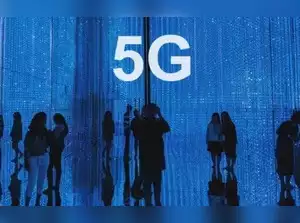Analysts anticipate that Reliance Jio’s strategy of integrating fiber and 5G fixed wireless access (FWA) solutions to tap the home broadband market in India will offer the business a significant advantage over its rivals.
The speed at which it is connecting homes, reduced pricing, bundled offers, and a strong network of local cable operators are all considered advantages for India’s top telecom operator by market share, according to analysts.
According to analyst projections based on data from the Telecom Regulatory Authority of India, Jio presently has over nine million home internet subscribers with a market share of 31%, as opposed to Bharti Airtel’s anticipated 7.2 million users at the end of March with a 25% market share.
Reliance Jio President Kiran Thomas stated on Friday that the business aims to link 100 million homes with Jio Fibre and 5G FWA in the next two to three years when discussing the company’s performance in the January-March quarter.

image source:https://img.etimg.com/thumb/msid-99634834,width-300,height-225,imgsize-19280,,resizemode-75/5g.jpg
5G is also driving our residential expansion (through Jio AirFiber)…Thomas stated that the JioFiber broadband backup plan of ‘198 is already receiving significant attention, particularly in tier 2 and tier 3 cities. “We are now positioning Jio Fibre even for the people who already have other broadband connections in their homes,” Thomas added.
At the end of March, the telecom provider unveiled the 198 entry package with speeds beginning at 10 Mbps. In contrast, Airtel’s cheapest bundle plan, which includes a broadband connection and entertainment applications, costs $699 per month. It includes bundled services like TV channels and OTT apps and has a speed of up to 40 Mbps.
We believe that Jio is using this technique to increase the market’s acceptance of fiber before upselling later on. We still believe that the business can succeed in fiber, which is a significant opportunity, just as it did in mobile. Jio Platforms also has ambitious goals in FWA that could revolutionize the global FWA market, according to brokerage firm NewStreet Research.
Customers who previously purchased a backup plan are now switching to a primary connection, claims Jio. This pattern resembles that of Jio’s introduction in 2016 when consumers chose it as their secondary SIM card before switching to it as their primary connection.
Jio is taking the next step in Homes (Fibre+FWA+payTV) through the introduction of the novel “backup” fiber plans, collaborations with LCOs (local cable operators), and the introduction of FWA. The purpose of backup plans is to prevent trojan incursions into other customers. Partnerships with LCOs and the introduction of FWAs can increase coverage and reach, according to brokerage JP Morgan. Even though Jio is also employing optical fiber to connect houses, analysts anticipate that the business will be able to deliver lower-cost residential internet options compared to fiber. Compared to wired networks, which are vulnerable to damage from excavations and building work, wireless networks are far less expensive to operate and maintain.
Jio’s recent forays into the postpaid and FTTH sectors point to its aggressiveness and intention to increase market share in these sectors. While focusing on 5G FWA rollouts in FY24, Jio is on target to achieve pan-India 5G coverage by December 2023. based on IIFL Securities.




